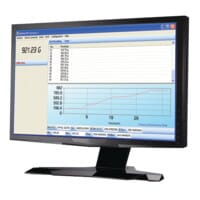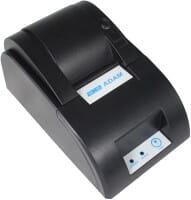
Laboratories generate a lot of waste in the name of science. Chemicals, plastics, biological material and excess reagents make up the majority. In fact, each year, 150,000 tonnes of plastic waste is generated from UK labs alone, and according to Russ Phifer at ASC Chemical Health & Safety, of all lab waste is discarded reagents.
While some waste is inevitable, the current trend is unsustainable if we’re trying to maintain a healthy environment for the future. How can you reduce waste in your lab? Let’s discuss.
Use Only What You Need
An excellent way to reduce waste in the lab is to use your balance to weigh samples, chemicals, reagents and other materials before using them. Weight-based measurements are more accurate than volume-based measurements, because the density of a sample can impact its volume while weight isn’t affected. Ensure you’re using exactly the amount you want consistently, preventing waste caused by using too much or too little of a material and ruining the batch.
Reusable Containers
Nearly all scales and balances offer the option to Tare a weight off your weighing results. The most common use for tare is to remove the weight of containers that help get lightweight and liquid samples on and off the balance safely, without any spills. That way, the display only reflects the sample, rather than both sample and container.
Instead of single-use containers when weighing samples, such as paper, thin plastic or aluminium, we encourage the use of reusable containers. Glass, ceramic, stainless steel and silicone are excellent options, depending on your needs. These materials are durable, easy to clean and resistant to rust or bacterial growth. They’re suitable for a wide variety of weighing tasks without risking cross contamination when properly cleaned between uses.
Thorough Training
Weigh it once, weigh it correctly! When balance operators aren’t familiar with a balance, they can make mistakes that inadvertently lead to increased waste.
For example, say you’re looking to record the weight of a liquid sample before and after it undergoes a chemical reaction. If you forget to tare the flask after you’ve combined chemicals, there’s no way to reverse time for a redo. You’d have to start over with a new batch, which means that the first one goes to waste!
Seemingly simple mistakes like forgetting to tare containers, not closing the draught shield, using the wrong function (like net total instead of accumulation) or neglecting calibration can really add to waste if they occur repeatedly over time. Luckily, those can all be avoided by ensuring each operator is properly, thoroughly trained in how to operate the balance. If you would like additional training on your balance, you can contact the Adam team for guidance.
Regular Calibration Checks
Calibration helps keep your balance accurate and precise over time, otherwise your results could start drifting or jumping. The aim is to calibrate before accuracy issues arise, not after – otherwise, how could you tell when your results really started going wonky?
The more precise your balance, the more often we recommend calibration. Laboratory balances should be calibrated at least once a month, or before any major weighing sessions. There’s no such thing as calibrating too often.
In highly precise laboratories, if your balance hasn’t been calibrated for a while, your results aren’t considered reliable. That means everything must be reweighed and you may have already disposed of some samples. Calibration only takes a few minutes; it won’t interrupt your workday. In fact, if the balance offers internal calibration, it can be pre-scheduled to calibrate overnight!
Digital vs. Paper Records
Handwritten records are a thing of the past. Not only are they unsustainable, they’re subject to human error and bad handwriting. With helpful data collection software like , you can record readings from up to 8 balances at once, without the need for any paper. AdamDU can also analyse the results to help find patterns in the data and then export everything into an Excel or CSV file.
If you need a physical copy, connect your balance to a printer like the , which will print GLP-compliant data in as little space as possible, saving paper.
Let’s work together to create a more sustainable future. To learn more, contact the Adam team.



